Copperhead and Timber Rattlesnakes are two species of venomous snakes native to North America. While both belong to the genus Agkistrodon, they have distinct characteristics that set them apart. In this article, we’ll delve into a detailed comparison of these two fascinating serpents, examining aspects such as size, coloration, weight, venom, and more.
Copperhead (Agkistrodon contortrix)
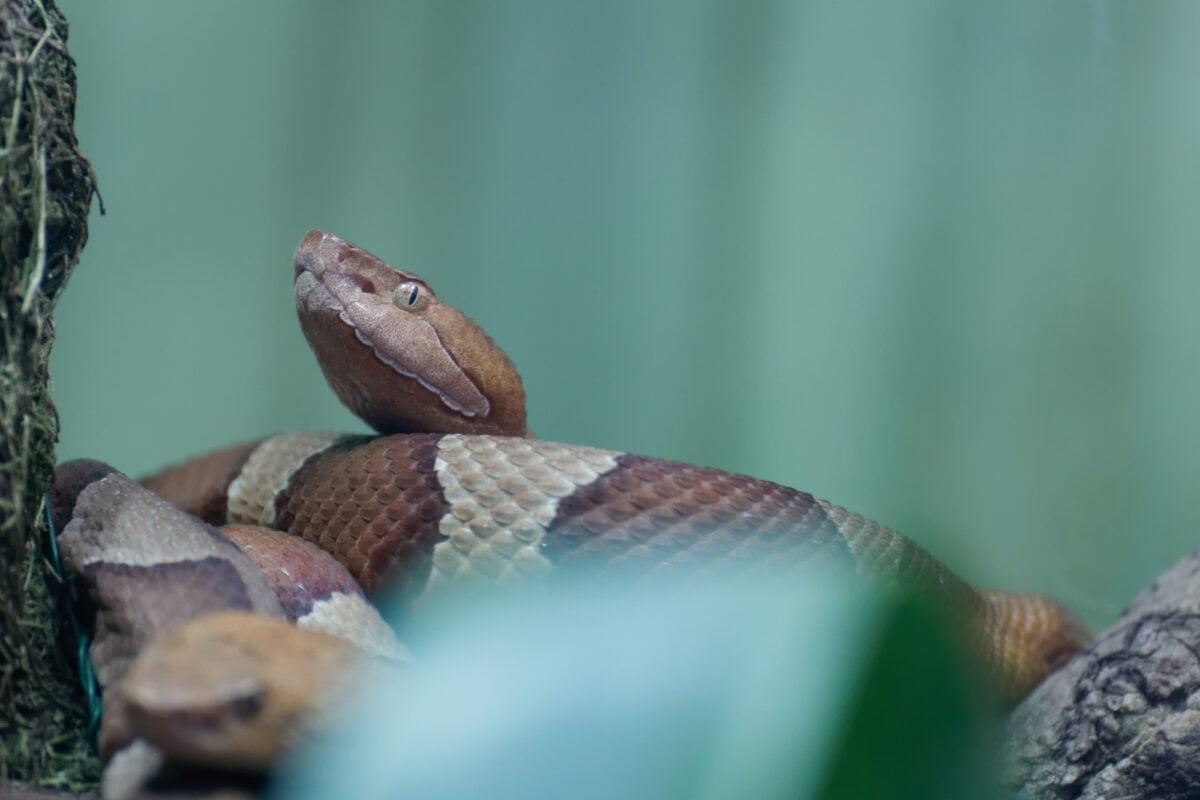
Size
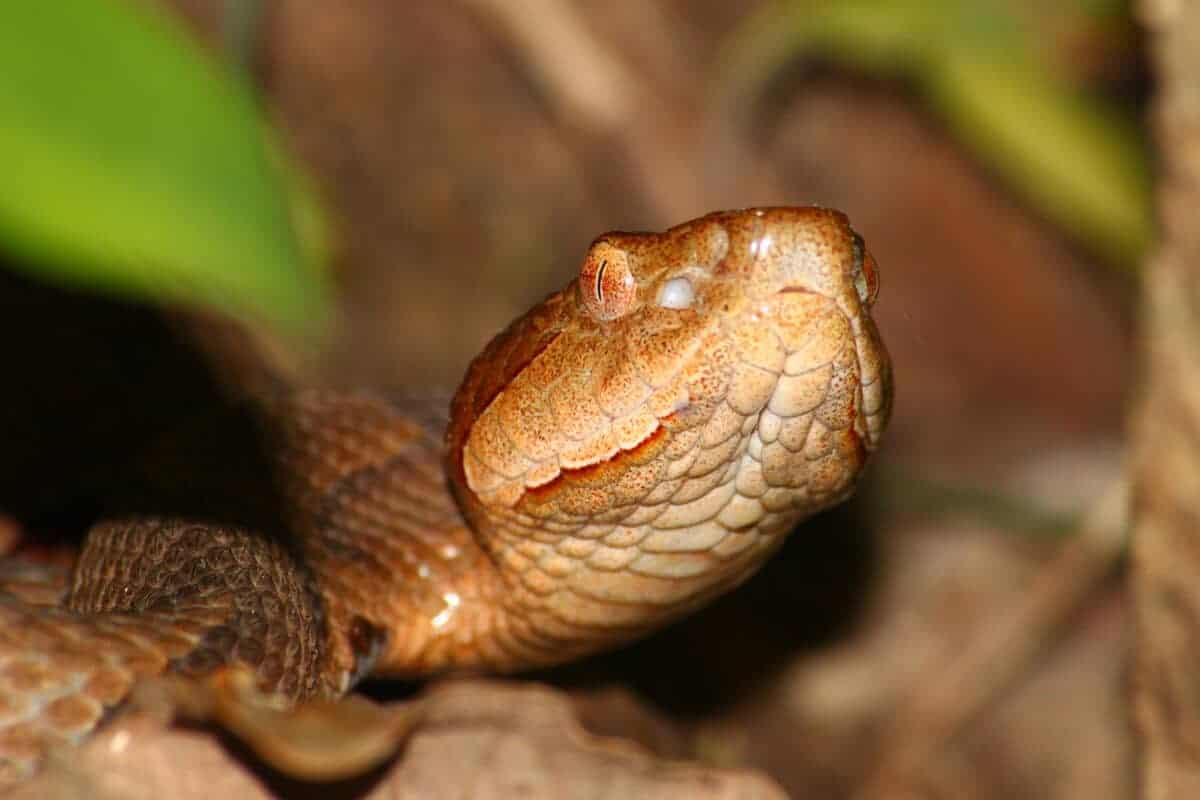
Copperheads typically range from 2 to 3 feet in length, although some individuals may grow up to 4 feet long.
Coloration
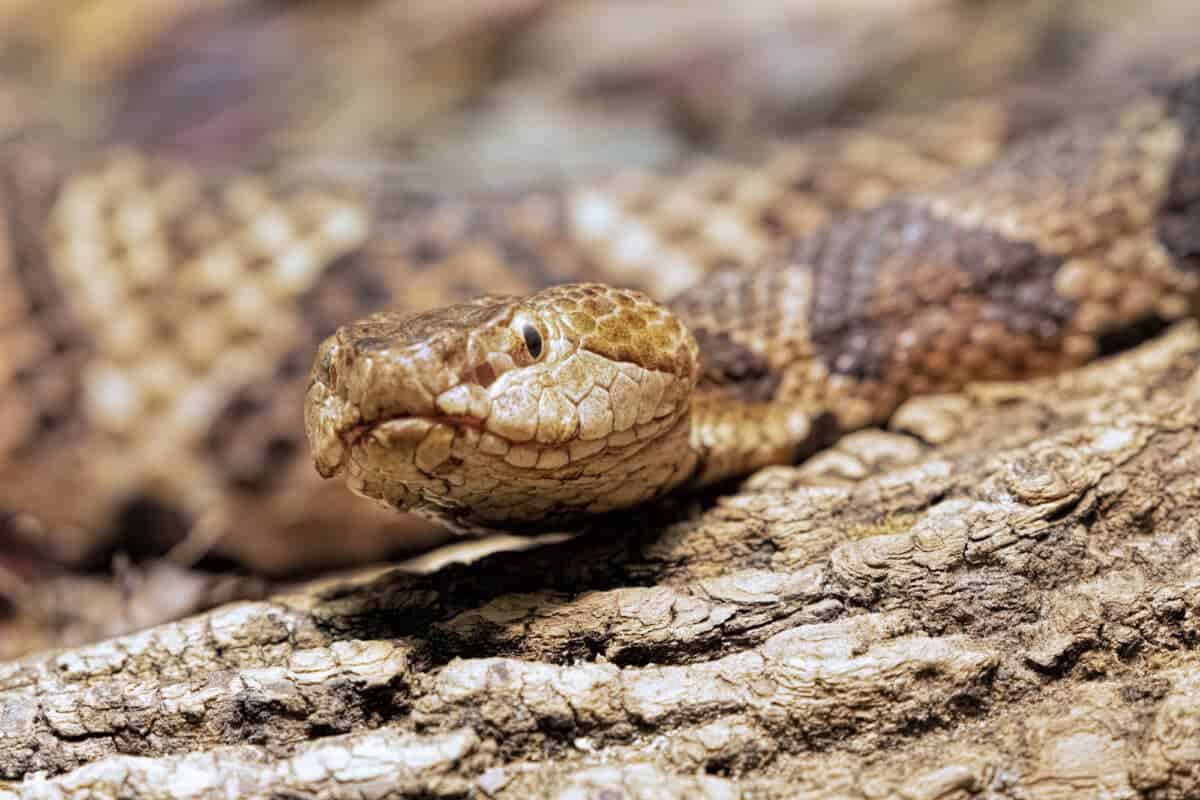
Their coloration varies depending on their habitat, but they generally have a coppery or reddish-brown base color with distinctive hourglass-shaped crossbands in shades of brown or tan. Their heads are often a coppery hue, hence the name “Copperhead.”
Weight
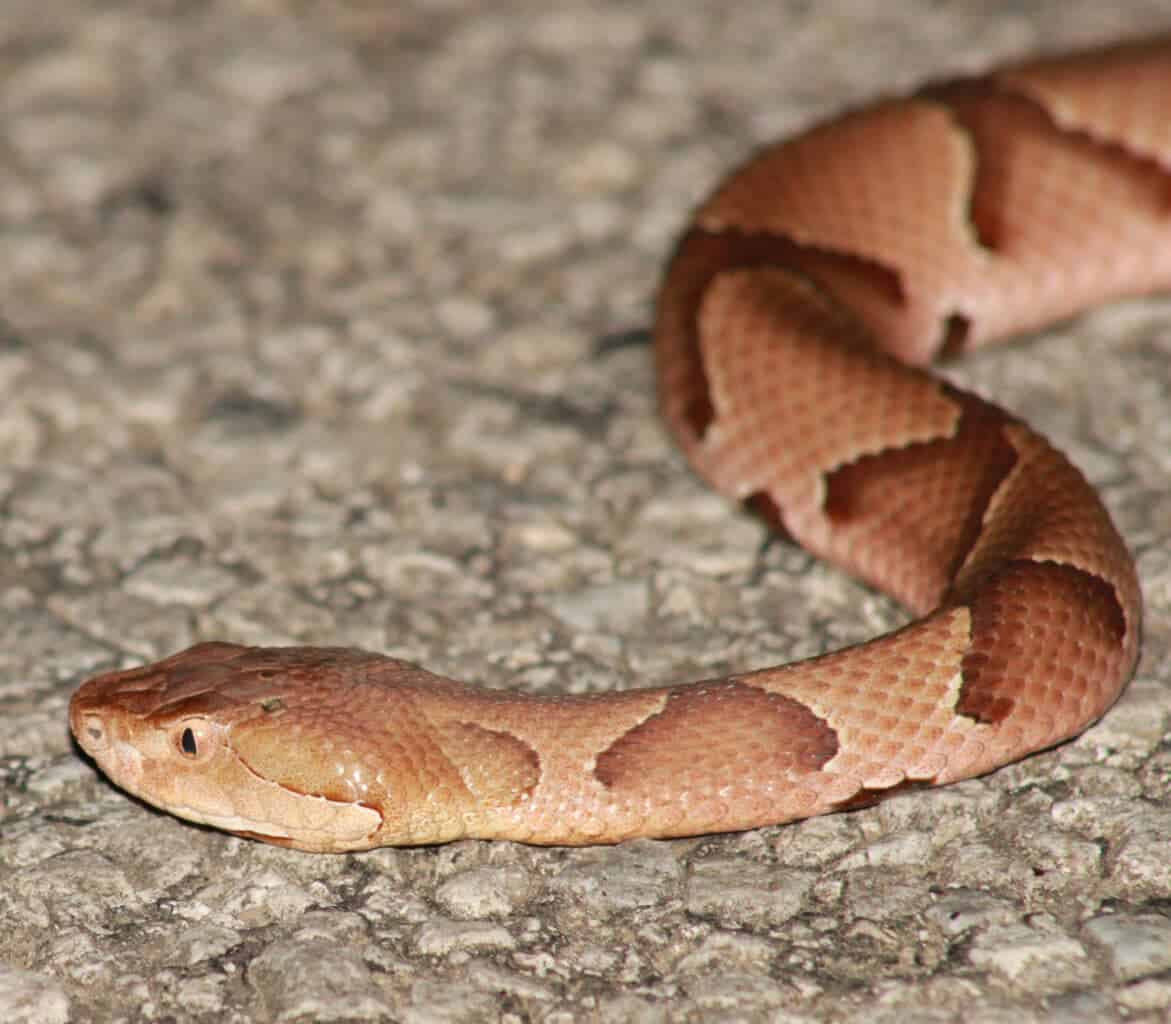
Adult Copperheads typically weigh between 1 to 2 pounds.
Venom
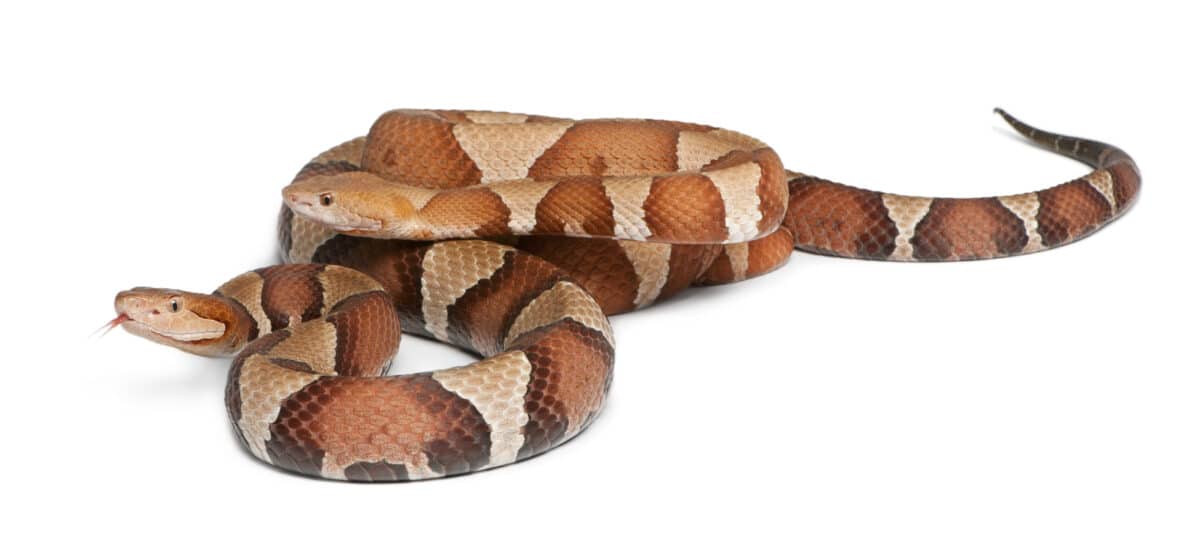
Copperheads possess venom that is cytotoxic, meaning it primarily affects tissue cells at the site of the bite. While their venom is potent enough to cause tissue damage and pain, fatalities from Copperhead bites are rare, as their venom is usually not lethal to humans.
Habitat
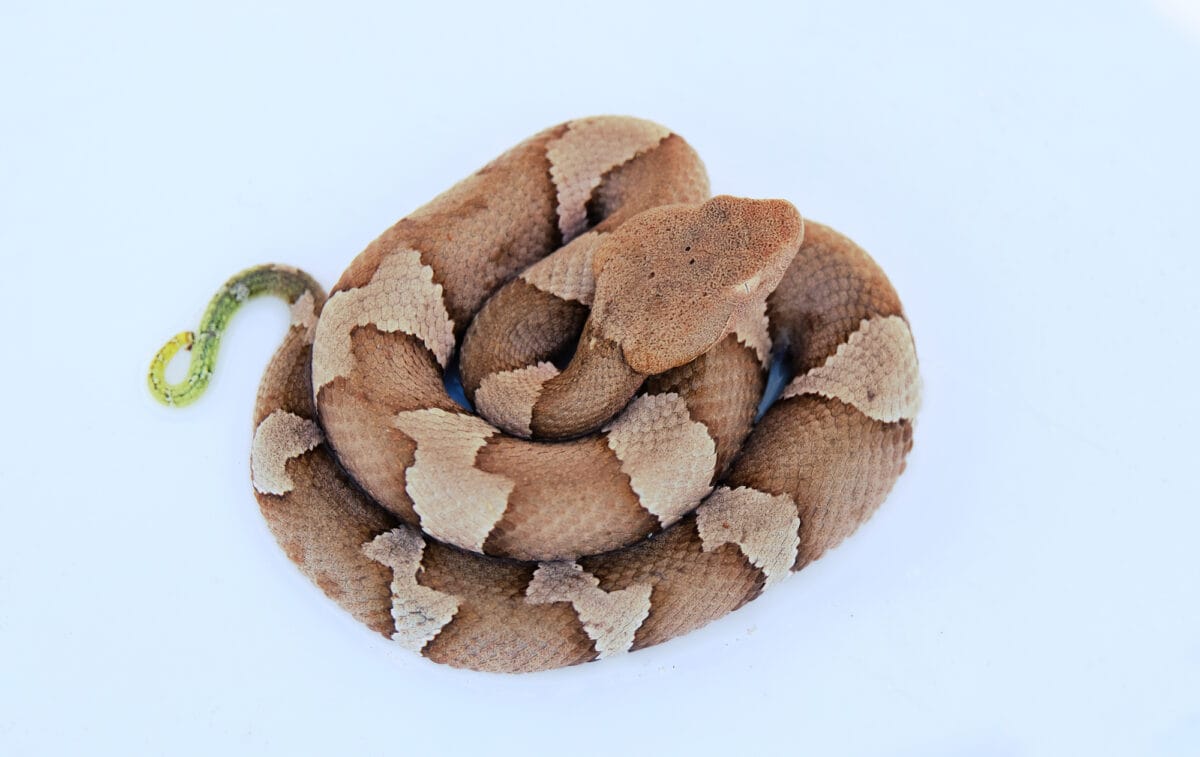
Copperheads are commonly found in forested areas, woodlands, rocky hillsides, and along streams throughout the eastern and central United States.
Behavior
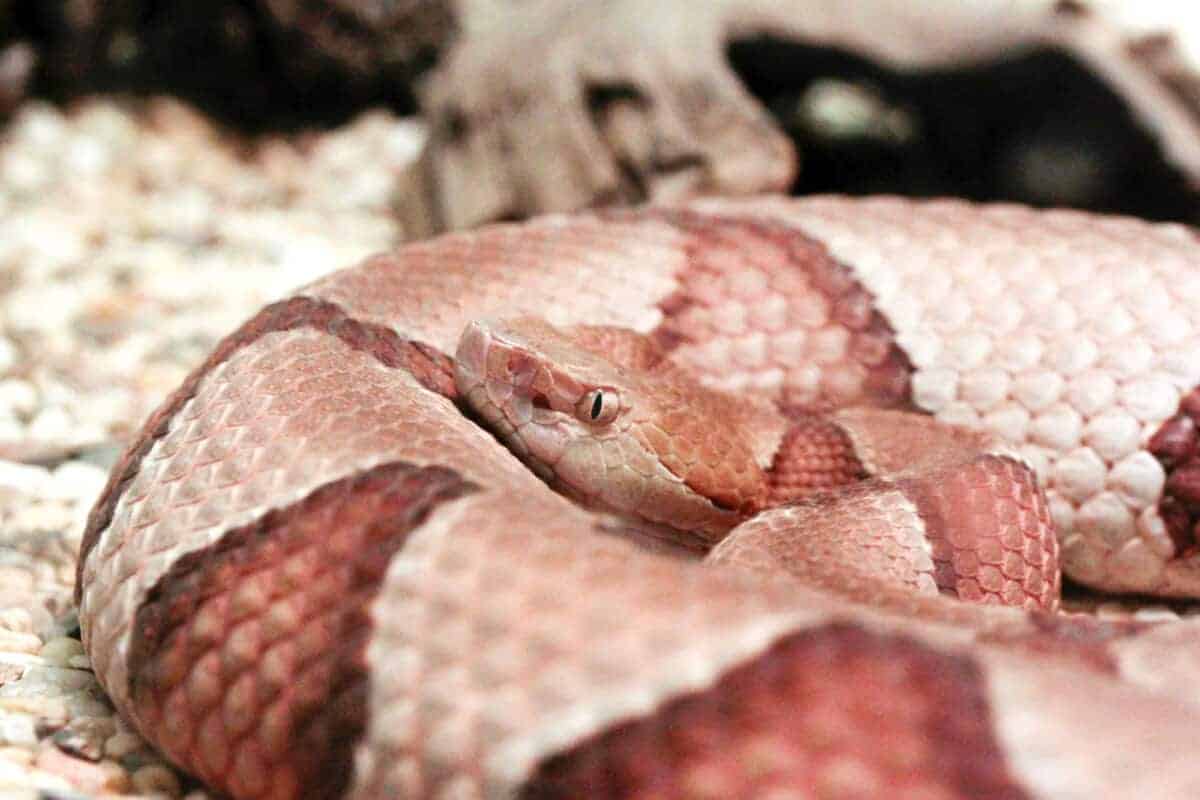
They are primarily nocturnal hunters, feeding on small rodents, amphibians, insects, and occasionally other snakes. Copperheads are known for their ambush hunting strategy, lying in wait for prey to pass by before striking with quick precision.
Geographic Range

Copperheads are primarily found in the eastern and central regions of the United States, ranging from Texas and Oklahoma in the west to the Atlantic coast in the east, and as far north as New England.
Reproduction
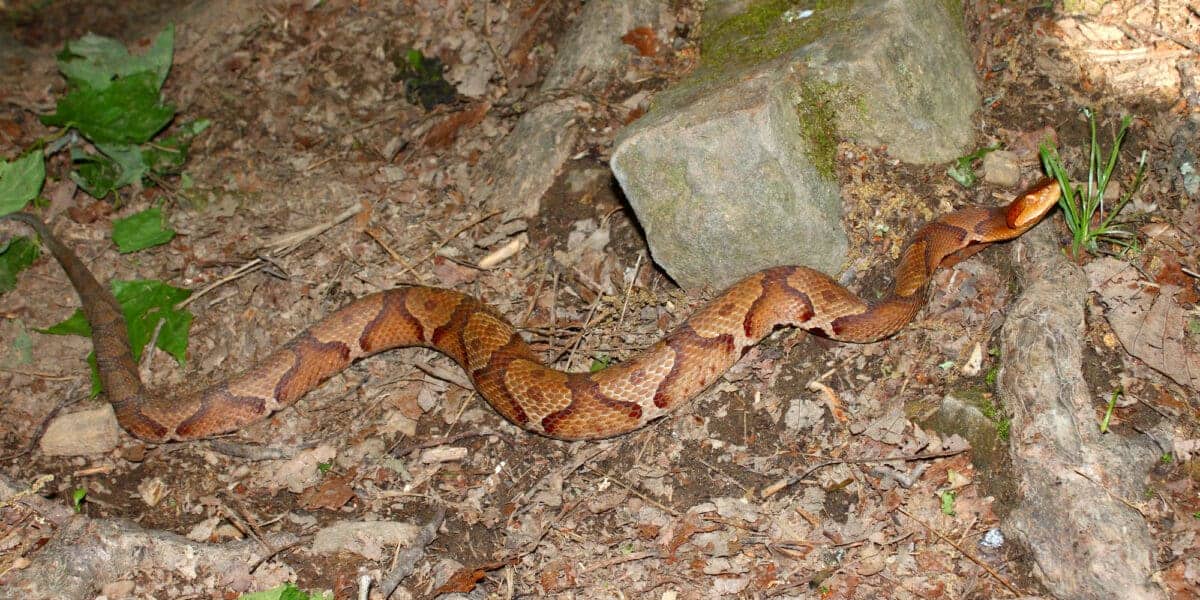
Copperheads are ovoviviparous, meaning they give birth to live young rather than laying eggs. Females typically give birth to a litter of 3 to 10 offspring, usually in late summer or early fall.
Defensive Behavior
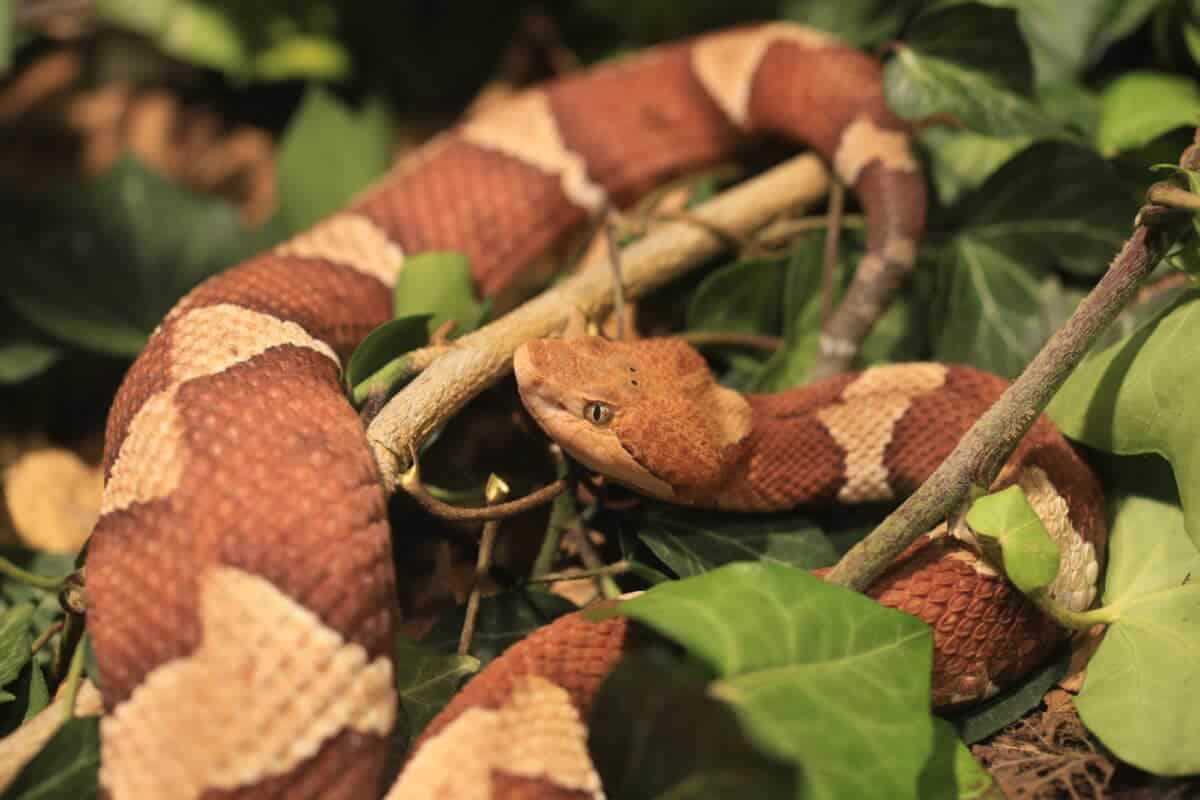
When threatened, Copperheads may employ a defensive posture by coiling their bodies and vibrating their tails, mimicking the appearance and sound of a rattlesnake to deter potential predators.
Timber Rattlesnake (Crotalus horridus)
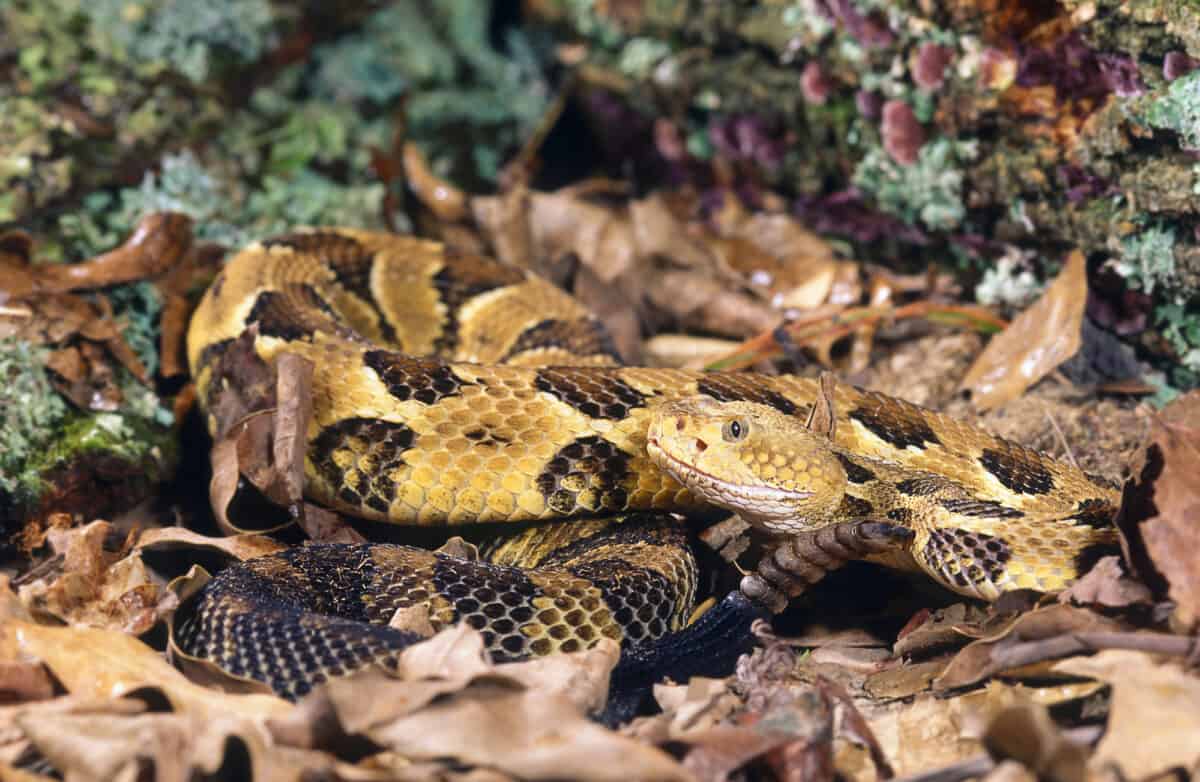
Size
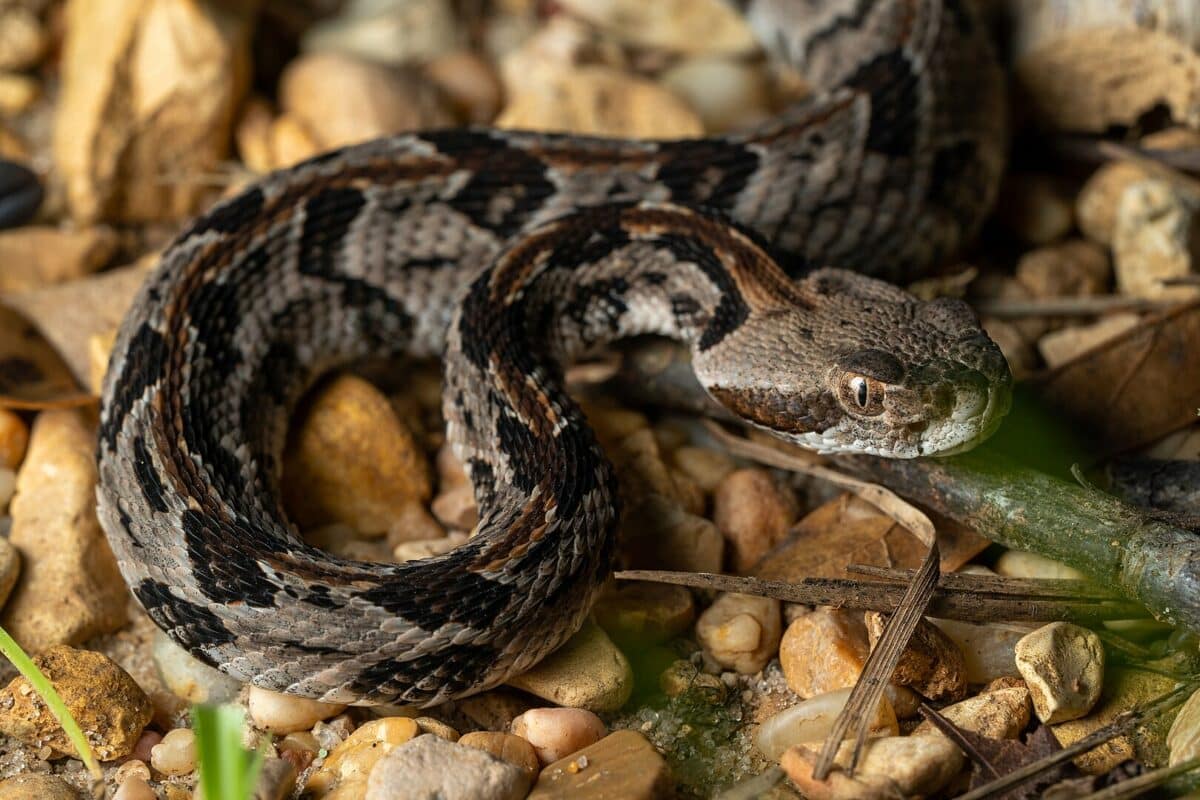
Timber Rattlesnakes are larger than Copperheads, with adults typically ranging from 3 to 5 feet in length, although some individuals may exceed 6 feet.
Coloration

They have a more variable coloration compared to Copperheads, but they often feature a grayish or light brown base color with dark crossbands that resemble timber markings, hence the name “Timber Rattlesnake.” Their tails end in a series of rattles, which they use as a warning signal.
Weight
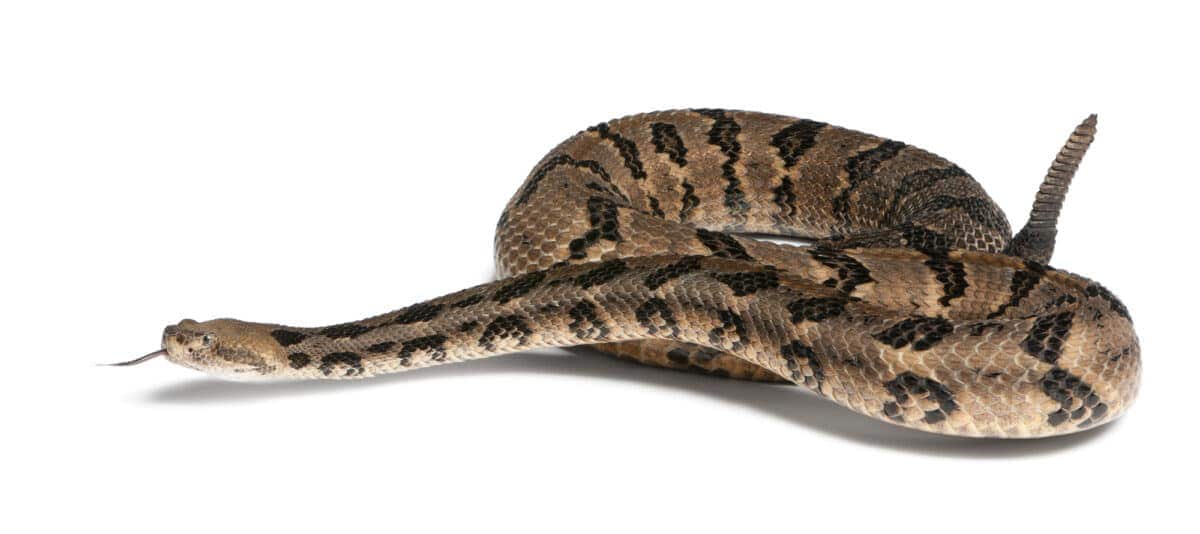
Adult Timber Rattlesnakes can weigh anywhere from 2 to 5 pounds, with larger specimens reaching up to 10 pounds. Image via Deposit photos
Venom

The venom of Timber Rattlesnakes is predominantly hemotoxic, affecting blood cells and causing tissue damage, pain, and potential systemic effects. While fatalities from Timber Rattlesnake bites are rare, they can be more severe than Copperhead bites due to the larger size and potency of their venom.
Habitat
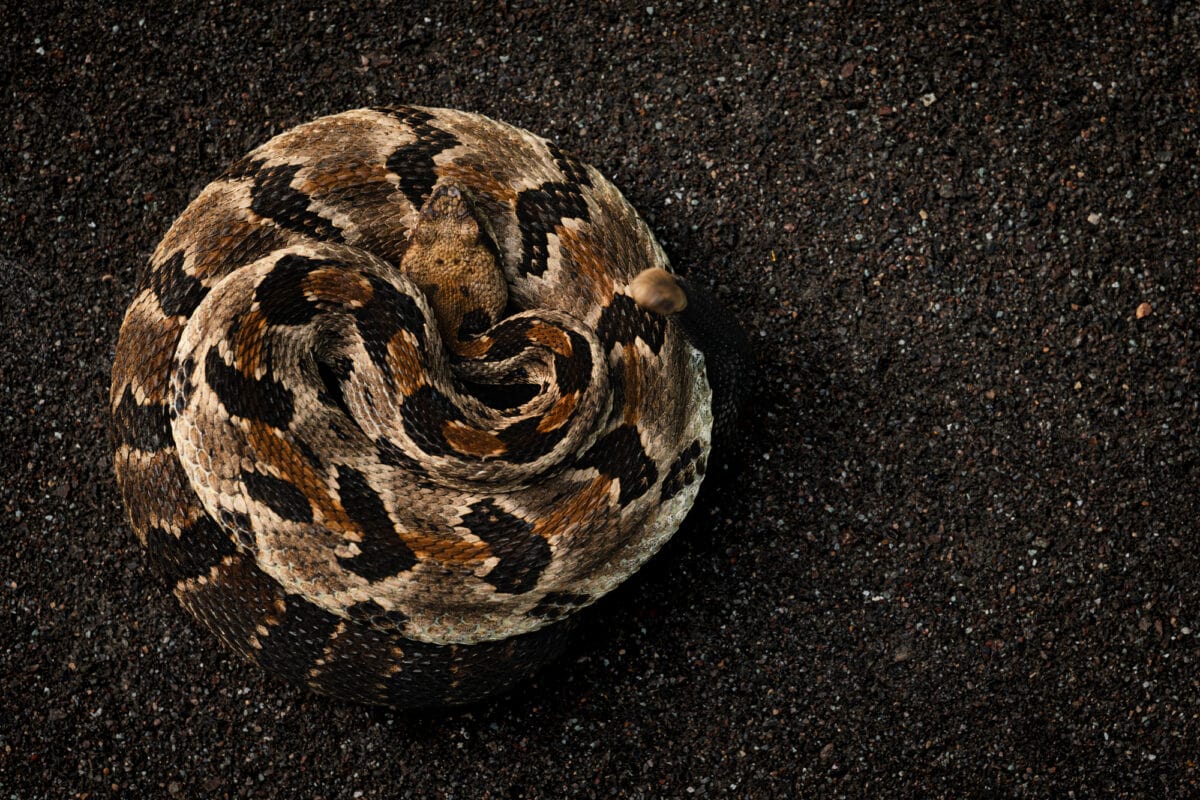
Timber Rattlesnakes inhabit a variety of habitats, including forests, rocky outcrops, marshes, and grasslands, across the eastern United States.
Behavior
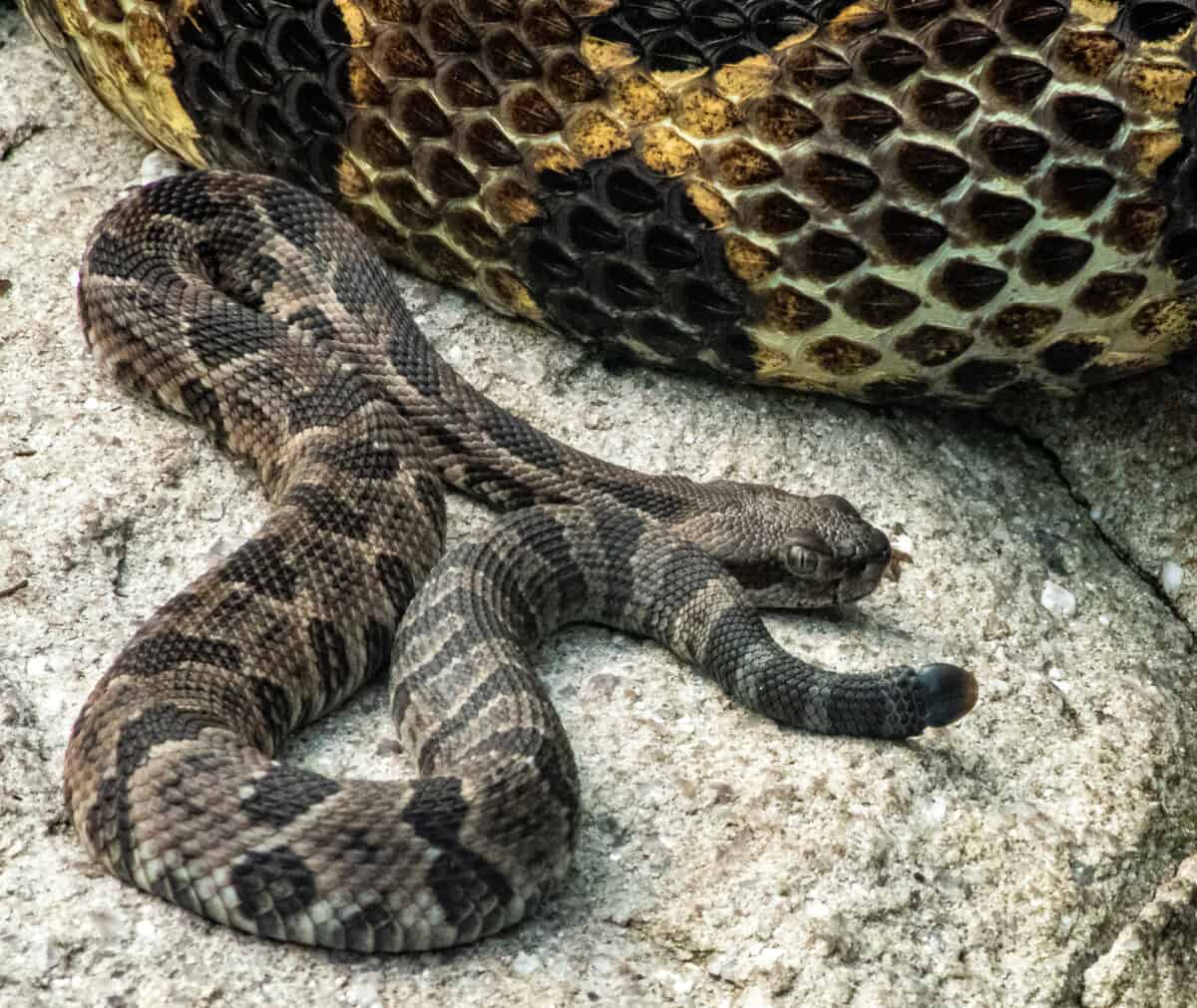
Like Copperheads, Timber Rattlesnakes are ambush predators, relying on stealth and camouflage to capture prey. They feed on small mammals, birds, and occasionally other reptiles.
Geographic Range
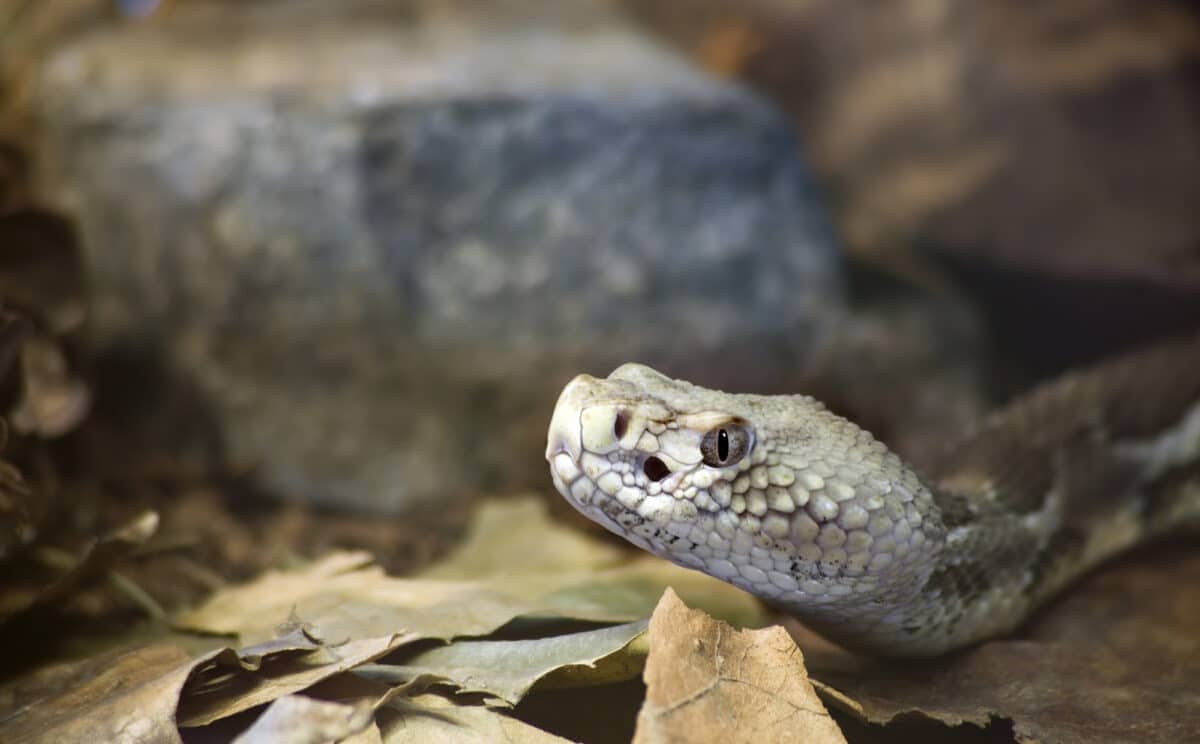
Timber Rattlesnakes have a broader geographic range compared to Copperheads, extending from the eastern United States into parts of Canada, including Ontario, Quebec, and New Brunswick.
Reproduction
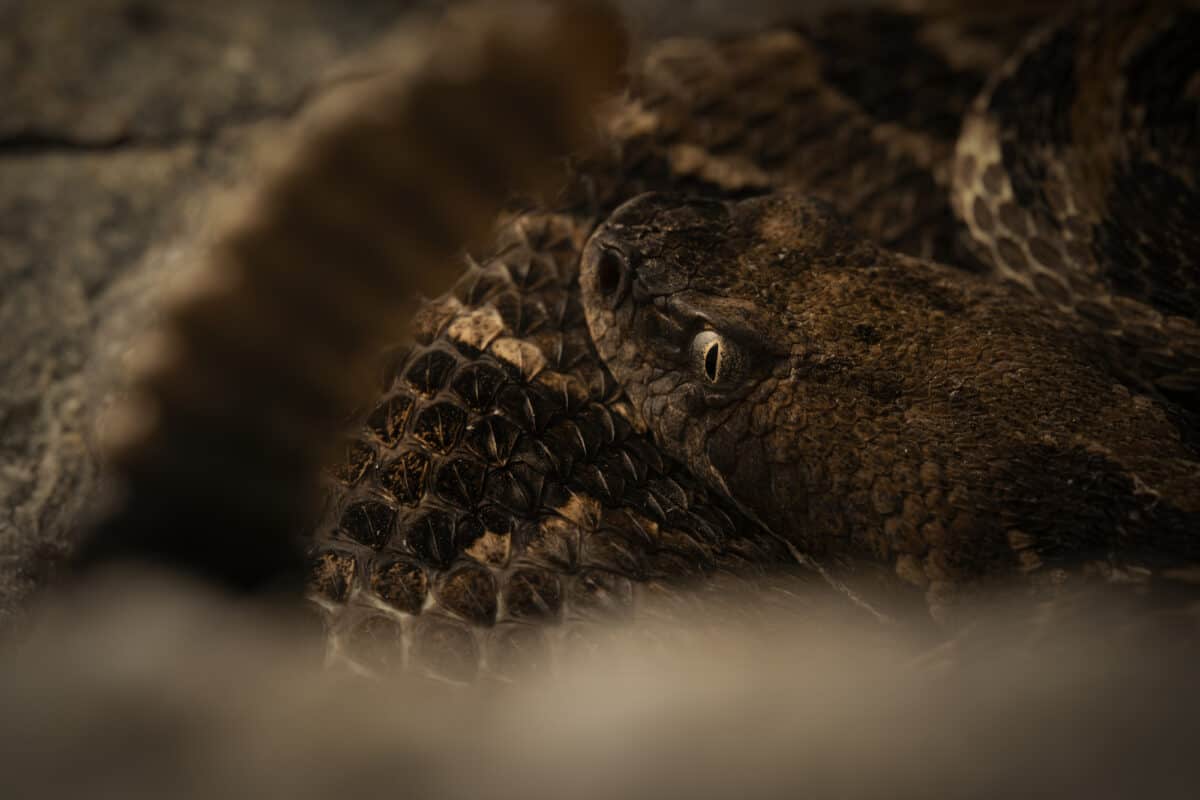
Similar to Copperheads, Timber Rattlesnakes are ovoviviparous, giving birth to live young. However, their reproductive cycle is typically longer, with females birthing a litter every 2 to 3 years.
Bottom Line
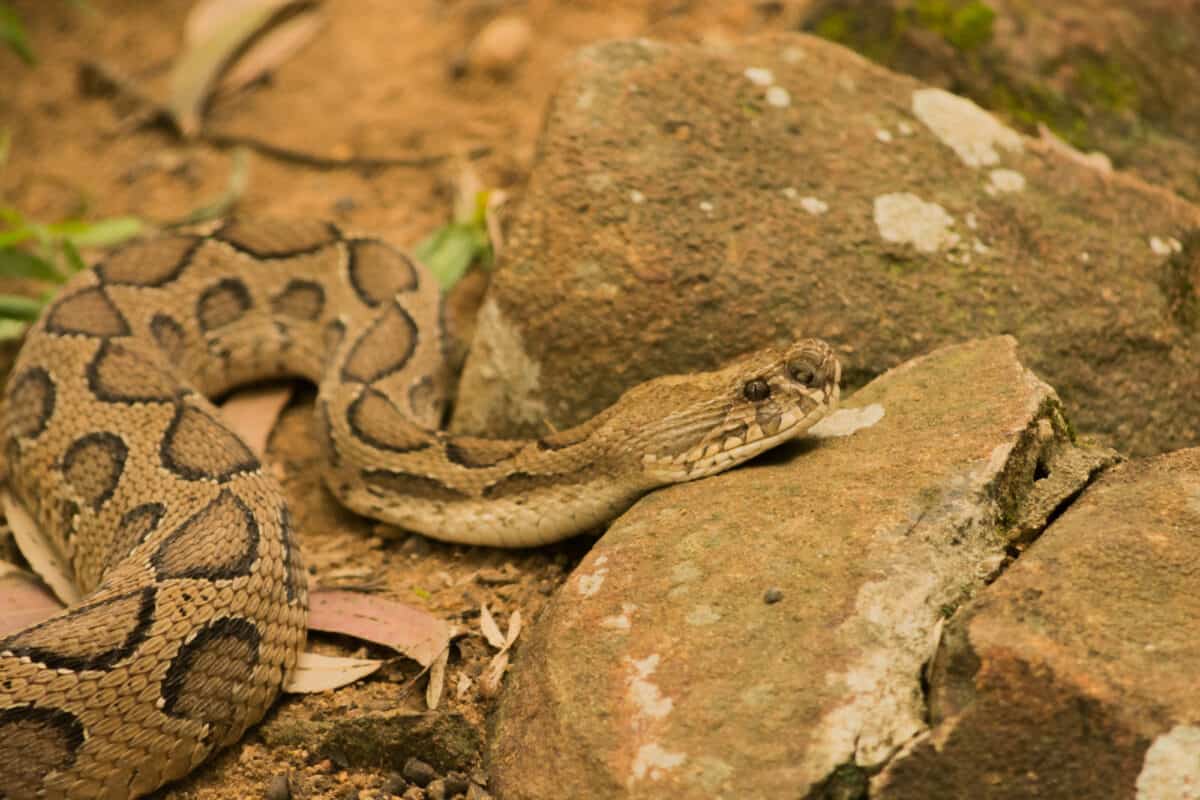
In summary, while Copperheads and Timber Rattlesnakes share some similarities as venomous pit vipers, they also exhibit distinct differences in terms of size, coloration, venom composition, and habitat preferences. Understanding these differences is crucial for recognizing and respecting these fascinating creatures in their natural environments.
If you enjoyed this article, check out our related article link below.
Next up:
Join our Forum for free today!

- Huge Pet Bison Breaks Into House - July 22, 2024
- Giant Black Bear Surprises Beachgoers by Emerging from the Ocean in Florida - July 22, 2024
- Brave Man Plays Instrument While Huge Bear Caresses His Shoulder - July 22, 2024
